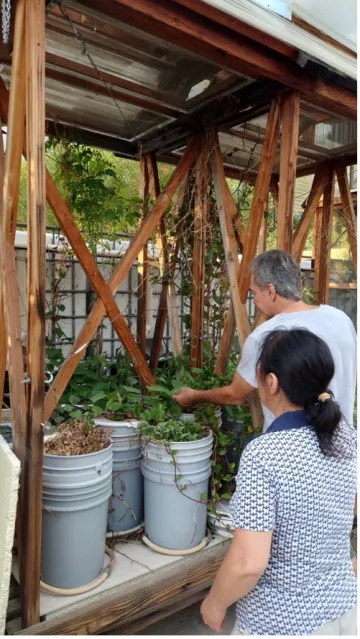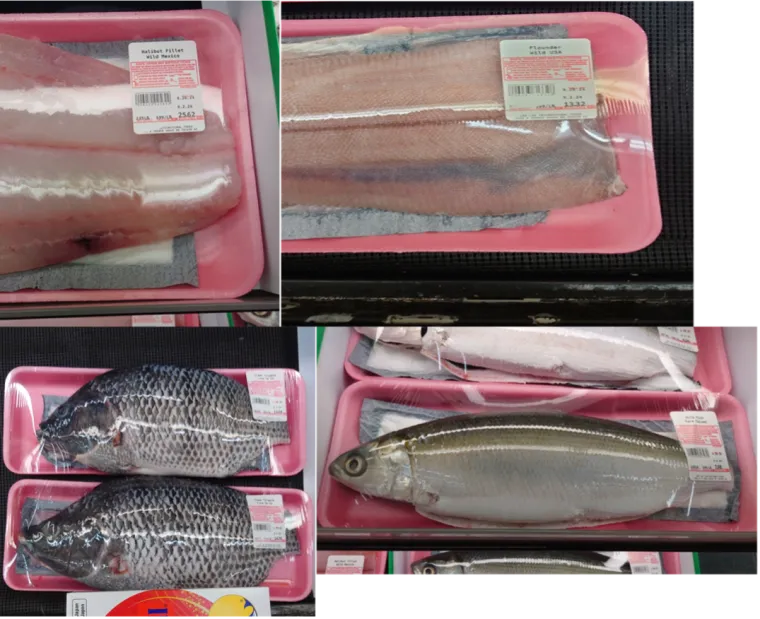Expanding Fish as Food in the Transformation of Food System
What comes to mind when people talk about seafood? The most common image among middle-class Americans seems to be Salmon, Sushi, or a low-fat healthy meal. Another image might be lobsters, shrimps, and oysters if you live along coastal areas or if you are a seafood enthusiast that enjoys them on your dining table or at restaurants at least once a month. Are there other ways we relate to seafood? It seems like seafood is usually an alternative to the more readily available chicken and pork in grocery stores and menu items. As a researcher of sustainable aquaculture governance, I find the question of how fish as food is understood and practiced in our daily lives matters to the broader focus on technical production and trade processes that is dominant in the debates in the current policy sector (Partelow et al., 2023). Research on seafood systems have pointed to the diversity of the production systems and locales, existing infrastructures, as well as experience with mainstream and alternative fisheries as drivers of resilience (Love et al., 2021). In this blog post, I document and analyze some of our diverse relationships with fish and seafood in Southern Arizona, interpreted from interviews with producers and consumers, and how we could facilitate the positive transformation and resilience of our food system through expanding food options and pathways.
We start with the rise of seafood and the common associated perceptions on sustainable seafood production like the environmental impacts, food safety and security issues in our society. The Food and Agriculture Organization (FAO) of the United Nations reported earlier this year that global aquaculture production of aquatic animals surpasses capture fisheries for the first time, and they expect consumption of seafood will continue to rise as well (FAO 2024). In the United States, talks about ‘National Self-Reliance’ on food has boosted seafood, also increasingly known as “blue foods”, into a more visible position in the food security scene. Debates about consumer behaviors, investments in infrastructure, and adaptation to climate change also follows (Oyikeke et al., 2024).
In contrast to this trend, we seem to know little about the range of seafood pathways, or how seafood is distributed and where they are coming from. An estimated 60-80% of total seafood consumed in the US, by volume, comes from imported sources (Oyikeke et al., 2024). The most important players in the seafood supply chain appear to be wholesalers and retailers like Costco and Walmart, who have the capacity to influence importation decisions and consumer behaviors. They mostly provide frozen or shelf-stable products. The secondary player is food distributors and wholesalers like the Santa Monica Seafood and Japan Food Corporation (JFC International Inc.), who controls the quality and access to seafood across North America, especially for restaurants. There are two other routes to access seafood that are also gaining traction in the mainstream food system and thus under governmental regulation. One is through importation from key harvest locations in Northwest Mexico like the Rocky Point to wholesalers or restaurants and the other is through direct marketing arrangements to distributors or consumers. Community-supported Fisheries are also an emerging practice but only in places with high local demands such as Maine. The recent expansion of meal delivery services, especially after the COVID pandemic, also represent a new food pathway.
During the summer of 2024, I was able to identify some of the local pathways and patterns of seafood consumption. I connected with producers who engages with aquaculture, aquaponics, and hydroponics for different reasons; researchers who is looking at more sustainable and effective ways to reduce waste in the animal agriculture production processes while improving their nutrition value; consumers from minority groups that have different relationships with seafood.
Aquaponics is the integration of hydroponics and aquaculture that grows plants and fish in the same system. It allows water to be re-used a second time and reduces the need for fertilizer, water, and space. It is especially valuable in arid and semi-arid regions. FAO technical paper (Somerville 2014) designated aquaponics as a resilient method for domestic food production and an important strategy to address urban and peri-urban food security. Dr. George Brooks from Mesa Community College sees aquaponics as an innovative way to address equity, sustainability, and self-sufficiency. His idea of Aquaponics Victory Garden focuses on integrating healthy food systems into the city’s 2050 Environmental Sustainability Goals where every community has a food garden of its own (Figure 1). Researchers at the University of Arizona’s Controlled Environment Agriculture Center are using a greenhouse-based recirculating aquaponics system to raise Tilapia, freshwater mussels, Azolla, and collard greens in a multi-trophic system to develop a viable and more sustainable protein alternative to fish meal. Both approaches have a strong applied science focus and highlight food access issues in the seafood value chain where food distribution and the reliance on commercial fish feed reveals the lack of alternative food pathways and the effort to transform it.

Decoupled deep water raft aquaponics system (left) and the nutrient film technique system (right) at the Mesa Community College, Mesa, Arizona.
However, aquaponics involves more uncertainty compared to hydroponics, which explains why there are more hydroponics backyard entrepreneurs than aquaponics. Two backyard hydroponics farmers sell their plants at Famers’ Market in Tucson. One specializes in tomato using drip irrigation and the other grows a diverse array of vegetables with the nutrient film technique (NFT). Yet another non-commercially motivated backyard gardener set up a rainwater harvesting mechanism to irrigate through a deep-water culture bucket system (Figure 2). These approaches showcase the diversity of food production with different levels of sustainability. The use of chemical fertilizer in hydroponics systems may still be contributing significantly to greenhouse gas emission

Figure 2. Backyard hydroponics system using the deep-water bucket system in Tucson, Arizona.
Minority groups appear to view seafood in a different way, although their decision-making is still heavily influenced by mainstream food consumption options and accessibility. Interviews with Mexican Americans reveal the important role international grocery stores play in food access and options. Stores like LeeLee International Supermarkets and El Super Markets offer both frozen and fresh seafood like shellfish on a first come first serve basis. There are more diverse species available such as Swai, Barge, Tilapia, and MilkFish (Figure 2). Fish is often cooked in more diverse ways such as fish soup and fish fried rice. However, different meal prepping strategies are required for frozen or more stable items compared to fresh seafood. One interviewee said that she could go to a seafood market and buy fresh seafood much more easily because the sea is only three hours away. In an interview with a Chinese, Myanmar, and an Indonesian American, who buy their food at Costco, the desire for easily prepped fish meal is reflected in their preference to buy frozen and shelf-stable items like Salmon and Tilapia. Tilapia is nicknamed “aqua-chicken” due to its hardiness and its value as a low-priced animal protein. The common theme across different ethnic groups of consumers is the idea that fish are a healthier choice of protein but are less accessible compared to pork, chicken, or beef. The affordability of seafood is highly variable depending on the species.
Food waste and changes in taste at the consumer level were also a discussion point during the interviews with food entrepreneurs and restaurant managers. Sushi is a form of food preparation and consumption that discard more than half of its meat due to the focus on eating the specific section of the fish. In the United States, the lack of fish as food culture is reflected through food waste. In contrast, consumers appear much more aware of ‘nose-to-tail’ eating when it comes to beef. Changes in seafood taste also drive changes on restaurant menus like the popularity of “Mexican Sushi”.

Shelf-stable fresh fish for sale at Lee Lee International Supermarkets including Halibut Fillet (Labeled Wild Mexico, top left), Flounder (Wild USA, top right), Clean Tilapia (Farm China, bottom left), MilkFish (Farm Taiwan).
Finally, the attempt to govern seafood through eco-certifications is gaining momentum as other more established agriculture and food products labels demonstrated their potential effectiveness in reducing social and environmental risks in the production processes. However, there are an ongoing debate about how to delineate management units and approaches that are embedded in local socio-political contexts and processes as well as the credibility of such certifications (Foley and Hebert 2013). Confusions and label fatigue among consumers and the question of “certification for who” are important points of consideration for future research.
In short, the idea of “fish as food” links producers and consumers together through multiple pathways that has significant implications for food system transformation that are often ignored compared to other less diverse but more available choices. As seafood consumption continue to increase, our focus needs to go beyond the realm of technical production solutions that are often applied with limited understanding of the socio-political conditions that affect their uptake into practice (Partelow et al., 2023). Aquaculture has the potential to meet our demand for sustainable food systems from the local to the global scale. Our food distribution system and available options are currently changing by our changing relationships with seafood and food in general. To support positive transformation of the food system at different levels, active management of institutions and infrastructures along with understanding producers and consumers’ participation and resistance to different forms of governance are crucial. The case of seafood in the context of sustainable animal agriculture shows us that a socially connected food system includes diverse knowledge and pathways.
Reference:
Foley, P., & Hebert, K. (2013). Alternative regimes of transnational environmental certification: governance, marketization, and place in Alaska's salmon fisheries. Environment and Planning A, 45(11), 2734-2751.
Love, D. C., Allison, E. H., Asche, F., Belton, B., Cottrell, R. S., Froehlich, H. E., ... & Zhang, W. (2021). Emerging COVID-19 impacts, responses, and lessons for building resilience in the seafood system. Global Food Security, 28, 100494.
FAO. (2024). In Brief to The State of World Fisheries and Aquaculture 2024. Blue Transformation in action. Rome. https://doi.org/10.4060/cd0690en
Oyikeke, T.S., Advani, S. & Stoll, J.S. Seafood independence is within reach: a multi-scale assessment of seafood self-reliance in the United States. npj Ocean Sustain 3, 31 (2024). https://doi.org/10.1038/s44183-024-00069-3
Partelow, S., Asif, F., Béné, C., Bush, S., Manlosa, A. O., Nagel, B., ... & Turchini, G. M. (2023). Aquaculture governance: five engagement arenas for sustainability transformation. Current Opinion in Environmental Sustainability, 65, 101379
Somerville, C., Cohen, M., Pantanella, E., Stankus, A., & Lovatelli, A. (2014). Small-scale aquaponic food production: integrated fish and plant farming. FAO Fisheries and aquaculture technical paper, (589), I.

